Japanese submachine guns Kijiro Nambu
Despite the design of the Japanese firearms and some very controversial decisions, one cannot say that the Japanese gunsmiths were far from the modern vision of one or another class of weapon and its implementation outside the country. In addition to significant differences, one can observe similarity, both with the most successful European models, and with popular models of weapons from the USA, but with its own unique features and solutions.
The most significant contribution to the development of Japanese firearms was Kijiro Nambu. The same designer who designed the Type 11 machine gun, which not only had the original power supply system, but also sometimes liked to gently bite machine guns for fingers when reloading. They say so "gently" that sometimes the fingers separated from their owner. In this article we will try to get acquainted with a less aggressive and more compact weapon, namely with Kijiro Nambu submachine guns.
"Tommy-Gan" in Japanese
One of the first Japanese submachine guns appeared in 1927 year. At first glance, this weapon can be accurately determined by what kind of submachine gun Nambu designed his own PP. During a business trip to the United States, the designer met the then completely new weapon, the Thompson submachine gun. Being impressed by the high firepower and stability of the PP when maintaining automatic fire, the designer decided to create his own version of "Tommy-Ghana" for the Japanese army, deprived of the shortcomings of its American progenitor, but at the same time retaining all its advantages.
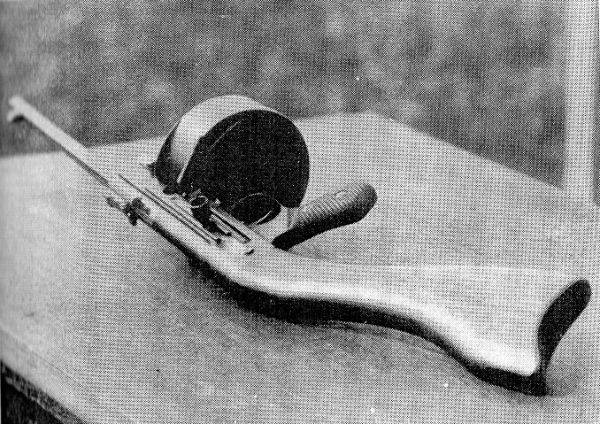
The beginning was more than commendable, but as always there were its “buts”. In 1927, the Japanese army was armed with a pistol cartridge 8x22 Nambu. To say that the ammunition was far from .45ASP means not to say anything. The only thing that ammunition has in common is the subsonic speed of the bullet.
A bullet with a mass from 21,85 to 6,4 grams with a real caliber 6,7 millimeter was placed in a sleeve of 8,18 mm length. This bullet, from the barrel of a Type 14 pistol, dispersed the powder charge to 325 meters per second, that is, the kinetic energy of the bullet was equal to 350 Joule. As it affected the characteristics of the submachine gun, we will understand a little lower.
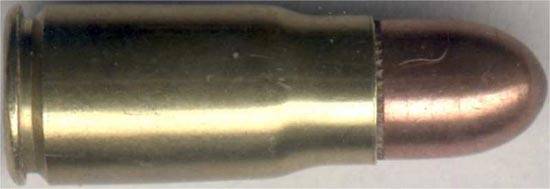
It should be noted that the Japanese patron was appreciated in Europe, at least, there are such rumors in the arms circles, not as the main ammunition, but as a cartridge for special weapons. So, you can find references to the creation of pistols with noiseless firing devices for the special services under this ammunition, although few have seen this weapon alive. So, it is quite possible that more than a few units of pistols were not released, if they existed at all for a Japanese cartridge, similar in characteristics to European ammunition was more than enough. But back to the Kajiro Nambu submachine gun 1927 of the year.
The automatic system of a submachine gun is built on the principle of using recoil energy with a free gate. The shot is made from the closed shutter, which has a positive effect on the conduct of a single fire. The trigger mechanism allows you to produce both single shots and shoot "burst". In general, fundamentally nothing new is found in this software.
If we talk about the appearance of the weapon, then, first of all, the "corporate" curved butt is striking. With such a butt, it was easy to abandon the pistol grip, but it is still present. Immediately above it is a translator of fire modes, also known as a fuse switch. Next to it is placed the handle for cocking the shutter, which, interestingly for that time, remained unmovable when firing. Aim devices are presented entirely adjustable and front sight.
Special attention is worth disc shop. Apparently, Kajiro Nambu did not like the procedure for equipping the stores of Tommy-Ghana, so he found his method of facilitating and speeding up this process. In the weapons shop ammo stacked in metal plates, tapes. Each such plate housed 10 cartridges. Since the ammunition was simply clamped in the ribbon, the principle of feeding cartridges into the chamber did not change, the ammunition was simply pushed forward from the plate by the bolt. The plate itself crawled out on the left side of the weapon and just fell out after using all the cartridges in it. The equipment of the shops was carried out by inserting plates with cartridges in turn, without disassembling the “disk”.
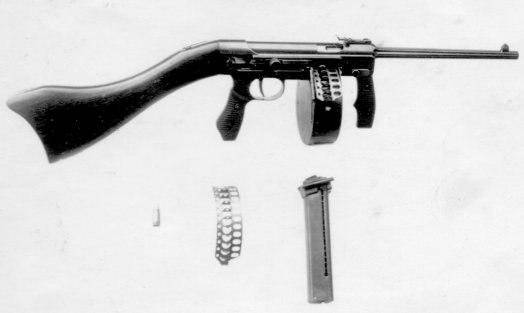
On all images of this weapon, disk shops have a rather large cut-out, through which a metal tape for ammunition is visible. It is not entirely clear whether this was the final decision or whether a cover was still present that covered this neckline. You do not need to be a designer to understand that the dirt and the ground that falls into this rather large window will easily lead to failures, even of such a simple design of the weapon.
According to various sources, the machine gun shop could hold 5 or 6 ribbons with ammunition, the fastest possible difference is the creation of several shops. In addition to the disc magazine, the submachine gun could also be fed from a box-shaped two-row magazine with a capacity of 25 cartridges.
The total length of the weapon was 690 millimeters with a kilogram 3,3 mass without cartridges. The curb weight of the disc store was more than one kilogram.
As is known, the characteristics of any weapon are determined primarily by the ammunition used. The 8x22 Nambu and .45ACP cartridges, which are incomparable in their characteristics, made the combat effectiveness and submachine guns incomparable in combat effectiveness. However, where one has disadvantages, the other easily has advantages. The “weaker” cartridge made it possible to make the bolt group of weapons simple and easy, unlike the American progenitor. The cartridge possessed a flat flight trajectory, the recoil when shooting was significantly less, although what kind of recoil could it be at all with such masses. But the main drawback of the Japanese submachine gun was the low stopping effect when hit, but this is, in contrast, in comparison with the .45ACP.
The final for the first Japanese submachine gun Kajiro Nambu was quite obvious for that time. The rate of fire in the 600 rounds per minute seemed overwhelming to the commander and excessive useless ammunition overruns. Even after the designer reduced the rate of fire of the weapon by half, the submachine gun was not put into service because of the high cost of production.
Submachine gun Nambu Model 1
Despite the failure of his version of "Tommy-Ghana" The designer did not stop and continued to work on the creation of a Japanese submachine gun. Like any designer, Kajiro Nambu was aware of what types of weapons are being created and put into service in other countries, which means it is only a matter of time before the military officials will have to have their own software.
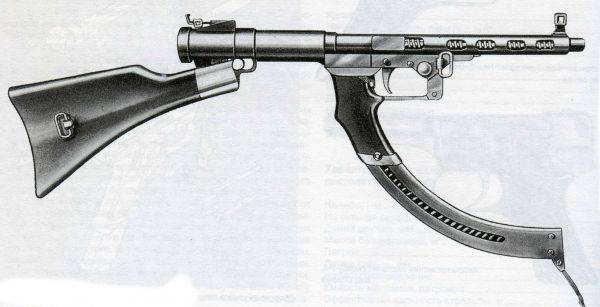
And to wait, as it turned out, did not have long. Already in the 30-s, several hundred submachine guns MP.28 / II were purchased, respectively, the task was set to do the same, but better and cheaper. Technical requirements for the new weapons were formed. It was planned to develop three models of submachine guns, the Nambu Model 1 the first of them.
On the basis of all the same ammunition 8x22 Nambu was developed by the PP, which by its decisions can plug many later European developments, but as always in Japanese weapons, there are a number of their “buts”.
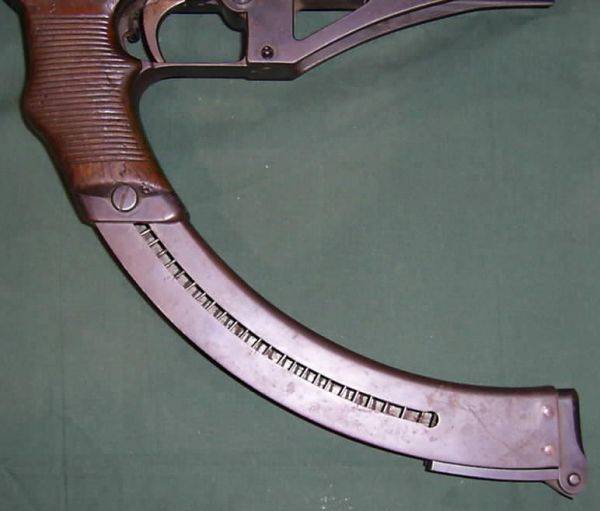
First of all, the pistol grip, which is turned in the “wrong” direction, catches the eye. A similar decision can now be found in sports weapons. Objectively, it is much more convenient to keep, although it is unusual, but how to shoot is a moot point. The second interesting point in this submachine gun, but the opposite concerns the handle, into which a curved magazine with a capacity of 50 cartridges is inserted. It can be said that Kajiro Nambu was one of the first to apply such a solution in submachine guns, which resulted in a reduction in the overall length of the weapon while maintaining a sufficient barrel length. And back, it is impossible not to draw attention to the possibility of dirt getting into the weapon shop, but visually it can be determined how many cartridges are left.
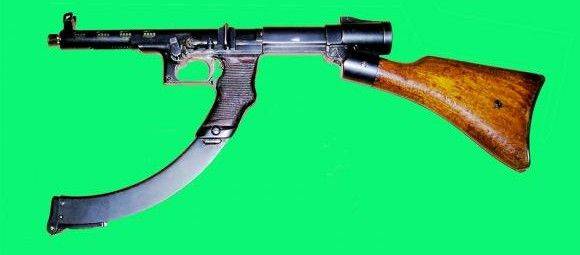
If we talk about the design of the machine gun Nambu Model 1, then there is not so simple. The basis was the automation system with a free gate, the shot is made from the open shutter, as if everything is customary and relatively cheap so far. But in order to reduce the rate of fire in the back of the PP is placed pneumatic damper. But for some reason the designer put the return spring around the trunk, combining it with the bolt group with the help of long barriers. Despite the downs on the very barrel of the weapon, it is unlikely that the return spring would long retain its properties during intensive firing and, accordingly, heating.
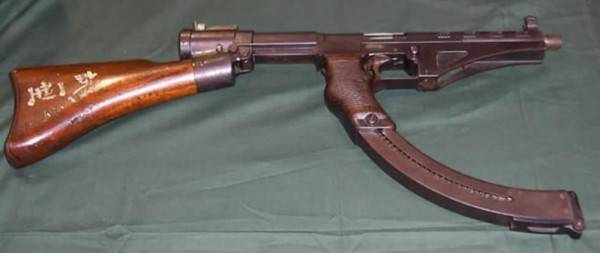
The total length of the weapon was 620 millimeters, weight without kilogram 2,8 cartridges, rate of fire - 500 shots per minute.
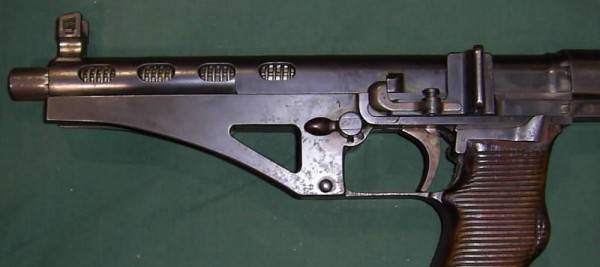
Despite the fact that this submachine gun was not put into service, it received at least a minimum distribution. Thus, the Japanese Imperial Navy ordered a small batch of PP data. In addition, these submachine guns were tested in the UK, as a weapon for armored vehicle crews, where they were refused due to weak ammunition and a number of other shortcomings, including ergonomics.
The first Japanese automatic and the first intermediate cartridge
As mentioned above, it was planned to develop and produce three models of submachine guns. The second version of this weapon was supposed to be, according to the modern classification, machine gun. A new weapon could boast a new ammunition, namely the cartridge 6,5х30. I agree, it doesn’t hold out to the intermediate cartridge, but this is not the pistol cartridge either. It was assumed that the new ammunition would be equipped with a spindle-shaped bullet weighing more than 7 grams, which was supposed to fly at a speed of about 600 meters per second. In the process of developing a new ammunition, various versions of bullets, of various calibers and shapes, were tried until they found the final version. And there was nothing left to do - to make a weapon for this cartridge, but the command considered that it was an unaffordable luxury to adopt another type of ammunition, and therefore the project was closed.
Submachine gun Type 100
This submachine gun was created in accordance with the third version of the PP for the Japanese army. Seeing the futility of creating more sophisticated weapons, Kajiro Nambu apparently decided to make the most simple and cheap product, resembling European models of PP with its appearance and design. So in 1939, the final version of the submachine gun under the designation Type 100 appeared.
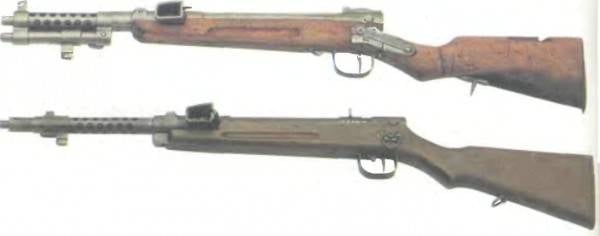
It is unlikely that this submachine gun could be called interesting if it were not for the strange demands on it. So this PP was completed with a bipod and a bayonet, and if the second is still more or less a useful thing, then for what a bipod remains a mystery. It is noteworthy that there was a version of weapons for paratroopers, which differed side-folding butt.
The weapon is a submachine gun with automatics, built on the principle of using recoil energy with a free gate. The shot comes from the open shutter, only one fire mode - automatic. Shops with a capacity of 30 cartridges are attached to the left side of the weapon. In other words, it turned out to be quite a “classic” European submachine gun, easy to operate and cheap to manufacture. But this did not force the command to urgently equip their army with these weapons. Only in the 1942 year, when only the blind or the fool could not see the advantages of the software, was the go-ahead for the mass production of this submachine gun. By 1945, by significantly reducing the overall product quality, and by further simplifying the design in 1944, we managed to create about 30 thousands of weapons, which, by the standards of wartime, is a very small number.
The version of the 1942 submachine gun of the year was 890 millimeters long and weight without kilogram 3,8 cartridges. His rate of fire was 450 shots per minute. The simplified version of the 1944 of the year had millimeters of 900 length with a kilogram of 3,4, while its rate of fire was already 800 rounds per minute. Both versions fed on 8x22 Nambu cartridges.
Сonclusion
In the end, I would like to conclude that the promising projects of submachine guns broke about the hardness and short-sightedness of military officials, but this will be only one side of the coin. To call the submachine guns that preceded the Type 100, interesting and in many points ahead of their time for decades is certainly possible. Nevertheless, if you look at these weapon samples objectively, then they could hardly be called good weapons with which you could fight. Separate open construction units, which seem to have been specially created for collecting dirt, are not always the right technical solutions, all of which makes the above submachine guns raw and absolutely unsuitable for arming a full-fledged army. Perhaps the only worthwhile project that was closed was associated with a new ammunition and weapon for him, although even there it is likely that the weapon would have turned out to be too “Japanese”.
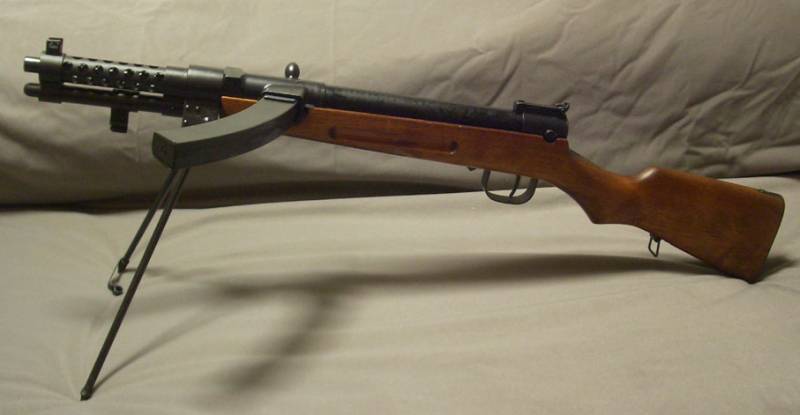
Information